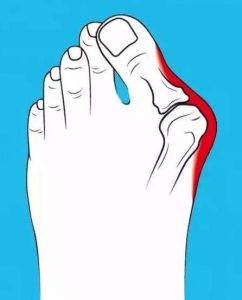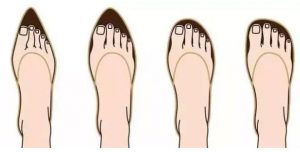Hallux valgus is one of the most common diseases that cause foot discomfort, commonly known as the bigfoot bone, the English name is Hallux Valgus, and the English name is Bunion. It is mainly manifested as the big toe turned outwards, accompanied by the inner bones of the big toe. Sexual bulge. Females are more common. The male to female ratio is about 1:2 to 1:3. The majority of patients in the hospital are adults, but studies have shown that nearly half of the patients have hallux valgus before the age of 20. The diagnosis of this disease is relatively easy, but sometimes the appearance of the inner bursa of the hallux, ganglion cyst, and gouty arthritis is very similar to that of the hallux valgus, so if you suspect that you have hallux valgus but are not sure, it is recommended Find a professional doctor to help you make an accurate diagnosis. Our outpatient clinic receives a large number of patients with hallux valgus every day. What are the issues they are most concerned about? We summarize as follows:
(1) Will hallux valgus be inherited? Then why do my parents do without me?
Studies have confirmed that 60 to 90% of hallux valgus patients have a family history, so this is a genetically predisposed disease, but there are indeed some patients without any family history, because hallux valgus is not a disease of a single cause, except In addition to endogenous factors such as heredity, ligament laxity, and certain special diseases, exogenous factors also play a great role.

(2) Is hallux valgus caused by improper shoes? Then why does my friend wear high heels every day without hallux valgus?
Shoes are indeed the most important reason among exogenous factors. As early as 1958, a study from Hong Kong confirmed that 33% of Chinese people who wear shoes have hallux valgus to varying degrees. However, the incidence rate is only 2% in ethnic groups without the habit of wearing shoes. It is also interesting that Japanese women had a very low incidence of hallux valgus before the 1970s because their traditional shoe habit was clogs that did not squeeze their toes. However, after that, Japanese people have been accustomed to wearing shoes. Westernization has led to a significant increase in the incidence of hallux valgus in Japanese women. But it is true that wearing shoes improperly is not the only cause of hallux valgus. The occurrence of hallux valgus is the result of the combined effect of endogenous and exogenous causes.
(3) Why does wearing high heels cause hallux valgus?
Wearing narrow pointed-toe high-heeled shoes hurts the feet most. This is because many fashionable high-heeled shoes are very narrow and the toes are squeezed in the shoes. If this happens, the medial ligament of the big toe is loosened, the joints are subluxated, and High heels can also increase the dislocation of the sesamoid bone of the big toe. The sesamoid bone is very important for the stability of the big toe, so we do not recommend wearing too narrow pointed high heels for too long.
(4) What are the symptoms of hallux valgus?
The most common symptoms are pain in the medial bunion, redness, and swelling of the bunion. In severe cases, it is impossible to wear shoes or skin ulceration occurs. Some patients will experience numbness and discomfort on the inside of the big toe due to the compression of the medial dorsal toe nerve at the bunion. Patients with a longer course of the disease may experience joint degeneration and difficulty walking. In addition, other toes symptoms such as the second, third, and fourth toes may also occur, such as hammertoes with flexion and deformation of the toes, calluses under the second and third metatarsal heads, and pain after long-distance walking.

(5) Is there any relationship between flat feet and hallux valgus?
There is still some controversy in the academic circles. It is not yet possible to prove that flat feet are the cause of hallux valgus. However, it is indeed found clinically that many patients with flat feet have obvious hallux valgus, and for hallux valgus surgery In later patients, severe flat feet for correction are often a risk factor for recurrence of the deformity.
(6) If hallux valgus has occurred, how to treat it?
The treatment of hallux valgus is divided into two stages: the first stage is to use shoes to adapt to the foot, that is, conservative treatment, by replacing the loose and comfortable shoes with good support to reduce the friction on the bony process, support the arch of the foot, and assist with the outside of the hallux. Strength exercises to stretch muscles, if there are corpus calluses and pain under the metatarsal head, a special arch pad can be used to raise the metatarsal neck to reduce the weight of the metatarsal head, thereby reducing symptoms. For many hallux valgus orthoses and toe separators, no studies have confirmed that they have the effect of correcting deformities. The second stage is to use shoes to adapt to the feet, that is, no matter how to try to change shoes, how to treat conservatively, the pain of the big toe cannot be solved well, affecting daily life, and surgery can be considered to correct the deformity of the forefoot.
(7) How to choose the right shoes?
It is recommended to buy shoes in the afternoon or evening when your feet are in the best condition of the day. Make sure to wear shoes on both feet and walk back and forth to feel the size and comfort of the shoes. Shoes with laces are best. Take the larger foot as a reference. The sole should not be too thin. The longest toe is the longest from the shoe. The distal end needs to have a gap of 1-1.5 cm, and the bony prominence on the inner side of the big toe should correspond to a softer material.

(8) When should surgery be considered?
If you can’t adapt to your feet with shoes, or if your big toe squeezes the second or third toe and causes deformity, dislocation, or straddling of the second or third toe, you need to consider surgery.
